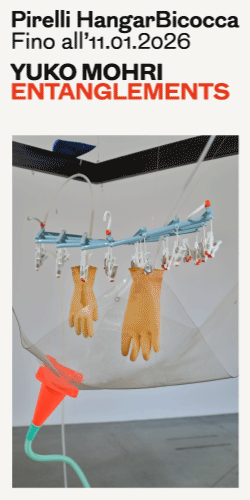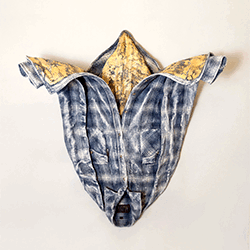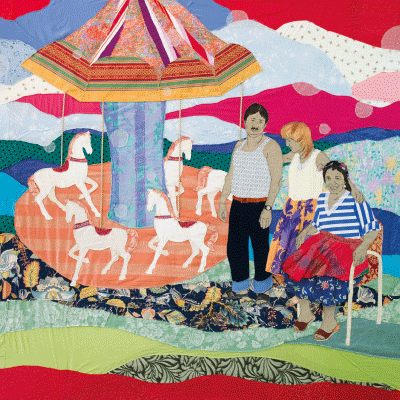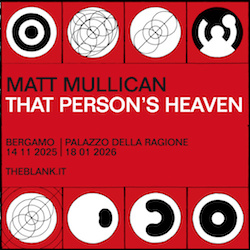
9° Berlin Biennale for Contemporary Art
The Present in Drag
DIS
As a theme, “the present” strikes a slightly desperate tone. Like a spin-class instructor trying to power through a massive hangover. Exhibitions have increasingly come to resemble TED Talks—theaters of competence. There is a pleasure principle at play, not too different from disaster films or horror movies. People clutch their tote bags a little tighter when they hear the phrases “big data, ” “filter-bubble, ” “postinternet, ” and “anthropocene” amplified through the venue speakers. Welcome to the post-contemporary. The future feels like the past: familiar, predictable, immutable— leaving the present with the uncertainties of the future.
Is Donald Trump going to be president? Is wheat poisonous? Is Iraq a country? Is France a democracy? Do I like Shakira? Am I suffering from depression? Are we at war? It is the present that is unknowable, unpredictable, and incomprehensible—forged by a persistent commitment to a set of fictions. There is nothing particularly realistic about the world today. A world in which investing in fiction is more profitable than betting on reality. It is this genre shift from sci-fi to fantasy that makes it inspiring, open, up for grabs, non-binary. The supergroup(s) of artists and collaborators that we have mobilized are not fatigued but energized by this uncertainty. In this climate anyone can begin to build an alternative present, reconfigure failed narratives, decipher meaning from continual flux. So we imagine the city of Berlin driven by these energies. Pariser Platz is our point of departure. An iconic tourist trap, it is the site where Michael Jackson once dangled his baby from his Adlon Hotel balcony in a private-public performance that anticipated the throngs of selfie sticks that now frame every historical site in Berlin. This square is surrounded by largely unseen networks of corporate and national power: it’s where Lockheed Martin, Allianz Stiftungsforum, DZ Bank, and BP Europa SE reside alongside the US and French embassies.
The common tools of visual and political persuasion—variously employed by state and market, left and right, art and commerce—swarm both the biennial as institution and “art” as a category of cultural production. The 9th Berlin Biennale for Contemporary Art materializes the paradoxes that make up the world in 2016: the virtual as the real, nations as brands, people as data, culture as capital, wellness as politics, happiness as GDP, and so on. The age of the customizable sneaker, political narrowcasting, algorithmic taste, and individuated diet regimes has splintered the universal into a multiplicity of differences. Just as the figure of the individual seems to loom larger than ever, her individuality has been busted up and shattered into fragments by countervalent, contradictory forces. The 9th Berlin Biennale will create a stage for this actor of the self to roleplay her own obsolescence. Our proposition is simple: Instead of holding talks on anxiety, let’s make people anxious. Rather than organizing symposia on privacy, let’s jeopardize it. Let’s give a body to the problems of the present where they occur so as to make them a matter of agency—not spectatorship.


Laure Prouvost — GDM Grand Dad’s Visitor Center
A cura di RobertaTenconi
Pirelli Hangar Bicocca
The solo exhibition “GDM – Grand Dad’s Visitor Center” by Laure Prouvost, is a Gesamtkunstwerk that brings together over fifteen works, including installations, videos and projections, sculptures and found objects: together, they form a personal museum dedicated to the artist’s grandfather, a place built in shifting layers, where architecture and content complete each other.
One of the most interesting figures of her generation, winner of the Turner Prize in 2013, Prouvost weaves intricate tales full of surreal humor, in work that emulates the constant proliferation and consumption of images typifying the communication methods of our time. Laure Prouvost’s work ranges freely between different systems of representation, alternating fiction, nonsense, and an imaginary, dreamlike world with the concrete reality of everyday life and human perceptions. Her projects combine a naïf, bric-a-brac aesthetic with ordinary objects and maze-like installations, as well as unstable structures and an elaborate use of technology.
“GDM – Grand Dad’s Visitor Center” is an exhibition that unfolds through disorienting spaces and paradoxical settings: a beauty parlor, mirrored walls and surfaces, tilted and angular rooms, dark and twisting corridors, an area where tea is served and a karaoke zone. The exhibition alternates light and sound, images and written words, moments of peaceful contemplation and outbursts of euphoria, in an entrancing journey that draws visitors in and demands their total engagement.
This project revolves around the story of Laure Prouvost’s grandfather, a prolific conceptual artist and close friend of famous German Dadaist Kurt Schwitters. After digging a long tunnel from his studio to Africa, he supposedly vanished into it one day for good, leaving his wife—Prouvost’s grandmother—as the sole guardian of his works. More specifically, the idea for the Visitor Center took shape in 2013 with the video installation Wantee, which includes several sculptures by this grandfather, now transformed into household objects, and shows her grandmother talking about the need to take care of them by creating this bizarre museum. The construction of the Visitor Center hints at a broader inquiry into the very meaning of museums, as places meant to preserve artworks for the future. In the video If It Was (2015) Prouvost challenges museum conventions: she imagines a place where people can dance and sing, where visitors are greeted with a warm kiss, and can do Zumba or pet the artworks. But above all, where the dark, dusty past takes on meaning in the present and future, where visitors can travel “through the tunnel of history” towards “other places.”












